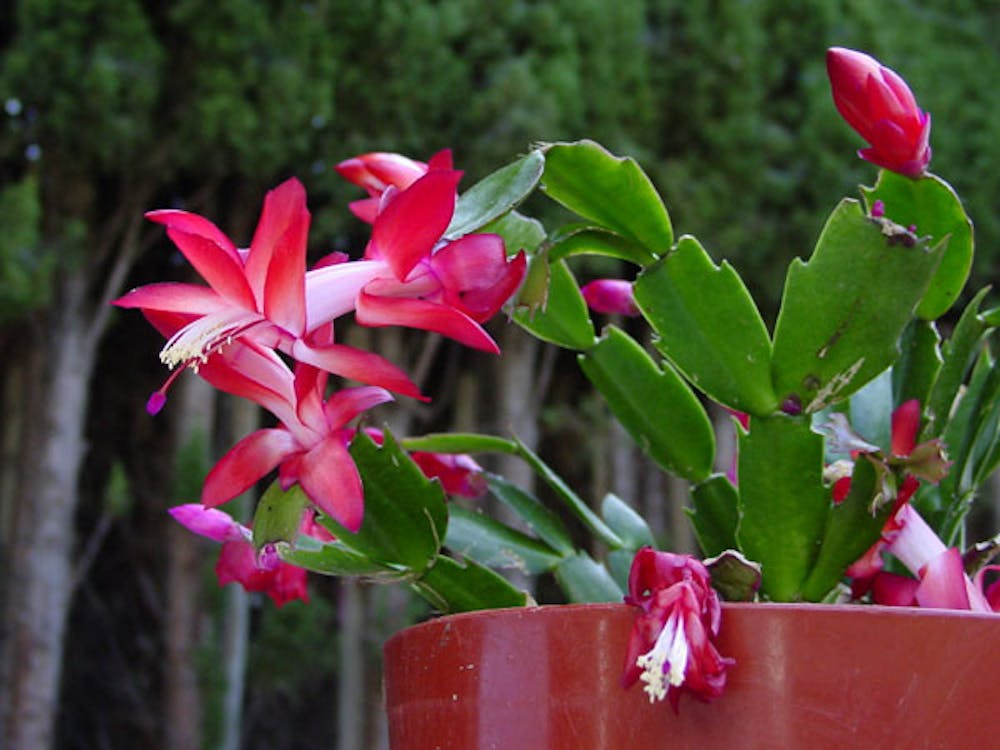
With its funny genus name, Schlumbergera, the Christmas cactus is a lovely plant to care for, and enjoyable to learn about. These tropical cacti are native to Brazil, where they grow in mountains and on top of other plants. In Brazil they bloom around Easter, but in Ohio’s climate they flower around Thanksgiving and Christmas.
The Christmas cactus is nontoxic, so parents and pet owners need not worry about keeping the Christmas cactus within eyesight, yet out of reach. This plant is a good option for anyone.
Christmas cacti are easy to take care of. In fact, like Poinsettias, they need long periods of dark (12-14 hours) in order to flower, so keeping them by a windowsill will let them naturally get enough light to bloom come the holiday season. In addition, they enjoy a steady drop in temperature to get ready for the big bloom, so a windowpane allows them to stay cooler than the rest of your houseplants. Christmas cacti like high-draining soil, about 1/3 sand and 2/3 potting soil, and should be watered once a week in winter and twice or thrice a week in warmer times—once the top inch of potting soil is dry to the touch, it’s time for a thorough watering. Christmas cacti grow to fit their container, and it’s good to repot it every two years if you want to end up with a festive behemoth.
The beautiful blooms of the Christmas cactus are about an inch long, and can be red, hot pink, yellow, or white.![Schlumbergera (#3 Pale Pink) [19 Feb 05]](https://mugreenhawks1.files.wordpress.com/2014/12/2-2.jpg?w=300)
Once the flowers wilt and drop, you will be left with a bright green, segmented plant that can live quite long – 20 to 30 years!
After the blooming is over, it is good practice to prune the plant by nipping off leaf segments, replanting about three joints into potting soil after letting them dry for a few hours. They will root in about a month, and result in adorable gifts.
When picking out a gift for yourself or loved ones, be sure to consider the Christmas cactus!
The Christmas Cactus

